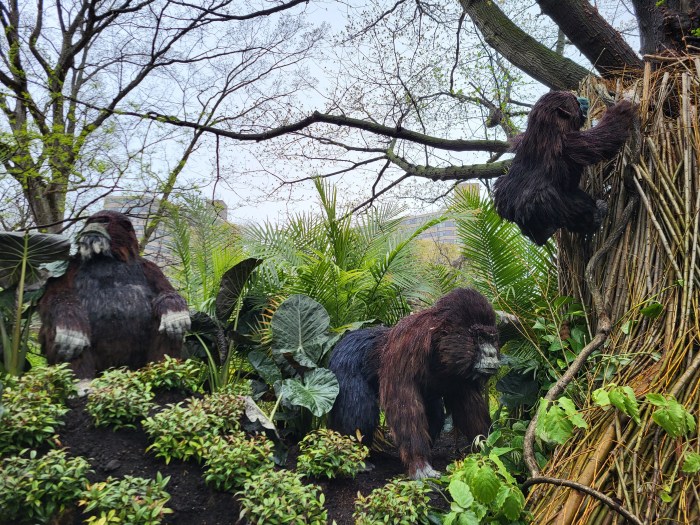My emotional state was complicated going into the interview.
I wanted to check in on how the city is preparing its public baseball and softball fields for the season, now that snow is (hopefully) behind us, and the Mets are still in playoff contention. A Parks Department crew responsible for field upkeep invited me to tag along at the East River Park ballfields. But, like many current or former city ballplayers, I have opinions about city field conditions. They’re not uniformly great. Bloody lips and noses from balls bouncing on bumpy fields are all too common. I hoped I wouldn’t blurt anything offensive when meeting the guardians of the dirt.
But my decade-old resentments dissipated after walking an hour behind the crews’ rakes, observing the difficult task that the Parks Department faces to satisfy knuckleheads like teenage me.
Hard work before you play ball
In Manhattan, there are fewer than 10 people responsible for upkeep of the nearly 40 traditional public fields operated by the Parks Deparmtent — other fields are made entirely of “synthetic turf” mostly cared for by different city crews, but more on that later.
In Manhattan, six of those employees are seasonal workers on a six-month baseball season contract, according to Matt Genrich, a park supervisor. They’re trained by him with the aid of YouTube videos and a guy named Vernon, who’s been taking care of the fields since before I was in high school and didn’t want his full name used.
But Vernon is clearly a pro who deserves the press. This became quickly evident upon observing him smooth the field with different devices pulled by tractor. Soon the field sported the swirls of predictable, soft dirt that are an infielder’s dream, and Vernon came over to explain a bit more of his handiwork: how he has to be careful not to drag clay over the edge of the infield because that would kill swathes of grass and over time create the feared “lip” that has resulted in innumerable black eyes/numb teeth/runs scored.
Investigating his line, I found that he’d expertly come right up to the edge but never over it, leaving just a small band for the other workers to smooth by rake.
“It’s sort of a thankless task,” I begrudgingly allowed, my memories of embarrassing bad hops resulting in costly league-game errors giving way to Vernon’s pristine field soon ruined, not by him. The grounds crew hits each field two to three times a week, typically before peak game times, and sees their work quickly erased by cleats.
A lot of work goes into the upkeep of a truly good field. Vernon grew up in Queens and said he liked the Mets then, remembered getting a day off from class at Baruch College back in ’86 for the championship run: but these days he’s living in the Bronx and rooting for the Yankees. And when he goes to Yankee Stadium, he marvels down at the tools and practices of the groundskeepers. “I take notice,” he says.
But fancy tools wouldn’t overcome all the obstacles it takes to care for city fields:
Dogs’ urine can kill the grass, said Genrich.
Nearby trees produce shade, slowing down water absorption.
Sub-par drainage systems lead to standing water after rain. The only thing the field defenders can do is push the water off with brooms, or put down kiln-fired absorbent clay.
And of course, the heavy use the fields endure.
It’s not easy being green
We saw the impact of that use on East River’s Field 6. Coincidentally, this field happened to have briefly been my high school’s “home” field. When I was there we had a different one each year. Another year we went all the way up to Inwood, which Genrich says is good now, though I’m not buying it.
Field 6 was hard to get to by bus and foot, but it had smooth synthetic turf for much of the infield; dirt basepaths and mound; a short center field fence that, if you hit the ball over, you only got a double. We once salvaged a rainout by dipping plastic solo cups into the puddles and emptying the dirty water into the drain one by one (Vernon, manning his drag mats, chuckled at that). It was a good field.
Now, the synthetic turf has buckled, leading to dips behind the pitcher’s mound. Of the Parks Department’s 608 fields, 59 use synthetic turf. A Parks spokeswoman says the agency has observed that parts of synthetic turf baseball fields wear out very quickly. The agency has found natural dirt to be best for baseball and softball — as long, of course, as the dirt is tended.
At Field 6, Genrich says they’re planning to retop the whole infield with clay. Then Vernon and his big tractor can take care of it.

















